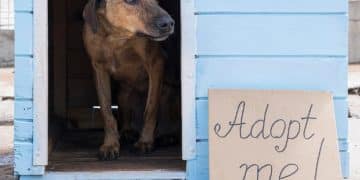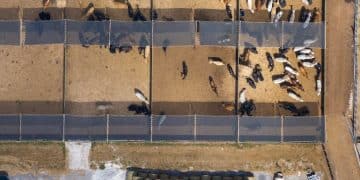Emergency Preparedness for Animal Rescues: A Step-by-Step Guide
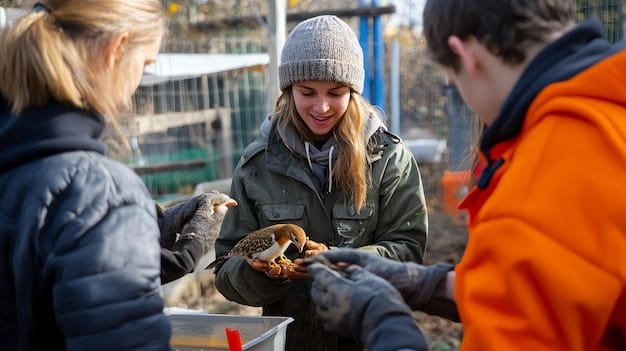
Emergency preparedness for local animal rescues is crucial for protecting vulnerable animals during natural disasters, ensuring their safety, health, and well-being through careful planning, resource allocation, and community collaboration.
Natural disasters can strike unexpectedly, leaving local animal rescues scrambling to protect the vulnerable creatures in their care. This **Emergency Preparedness for Local Animal Rescues: A Step-by-Step Guide to Protecting Animals During Natural Disasters** provides practical strategies and resources to help your organization safeguard animals before, during, and after a crisis.
Why Emergency Preparedness Matters for Animal Rescues
Animal rescues are vital community resources, offering sanctuary and second chances to animals in need. However, natural disasters can overwhelm even the most dedicated organizations.
A well-developed emergency plan is not just about protecting animals; it’s about ensuring the continuity of your rescue’s operations, safeguarding the well-being of your staff and volunteers, and maintaining the trust of your community.
Protecting Vulnerable Animals
Animals in shelters and rescues are particularly vulnerable during emergencies. They may be confined, lack the ability to escape, and rely entirely on humans for their care and safety.
Ensuring Operational Continuity
A disaster can disrupt your rescue’s ability to function, impacting essential services like feeding, medical care, and adoption. Preparedness helps you minimize downtime and resume operations quickly.
- Having backup power sources for critical equipment.
- Establishing alternative communication channels.
- Securing temporary housing and supplies.
An effective emergency plan ensures the safety of animals and the continuity of your organization in the face of adversity.
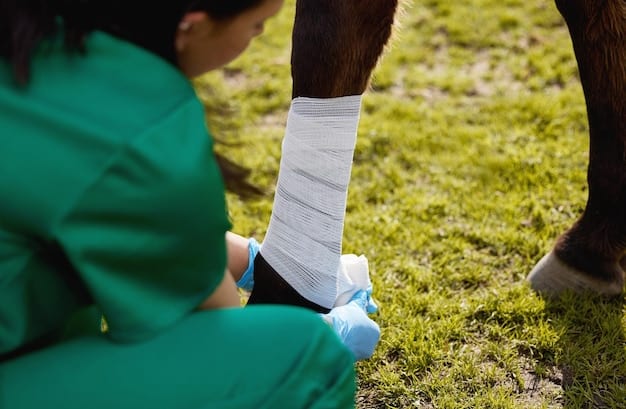
Step 1: Risk Assessment and Planning
The first step in emergency preparedness is to assess the specific risks your rescue faces and develop a comprehensive plan to address them.
This involves identifying potential hazards, evaluating your rescue’s vulnerabilities, and outlining detailed procedures for different emergency scenarios.
Identifying Potential Hazards
Consider the types of natural disasters that are most likely to occur in your area. These could include hurricanes, floods, wildfires, earthquakes, tornadoes, or severe winter storms.
Assessing Your Rescue’s Vulnerabilities
Evaluate your rescue’s physical location, infrastructure, and resources. Are you located in a flood zone? Do you have adequate shelter for all animals? Do you have backup power sources?
- Reviewing insurance coverage for disaster-related damages and liabilities.
- Identifying alternative locations for temporary shelter.
- Creating a detailed map of evacuation routes and assembly points.
By carefully assessing risks and vulnerabilities, you can develop a targeted and effective emergency plan that protects your animals and your organization.
Step 2: Developing an Evacuation Plan
A well-defined evacuation plan is the cornerstone of emergency preparedness. This plan should outline procedures for safely and efficiently relocating animals, staff, and volunteers to a designated safe location.
It’s essential to consider transportation, temporary housing, and ongoing care for the animals during and after the evacuation.
Establishing Evacuation Routes and Transportation
Identify primary and alternate evacuation routes that are accessible and safe. Secure reliable transportation options, such as vehicles, trailers, or partnerships with local transportation providers.
Securing Temporary Housing
Establish agreements with other animal shelters, veterinary clinics, boarding facilities, or even private homes to provide temporary housing for evacuated animals.
Animal Identification and Tracking
- Microchipping all animals in your care and maintaining accurate records.
- Using temporary identification tags with your rescue’s contact information.
- Documenting each animal’s medical needs and dietary requirements.
Remember, a carefully thought-out evacuation plan can make a life-saving difference during a disaster. Regular drills and simulations will ensure that everyone knows their roles and responsibilities.
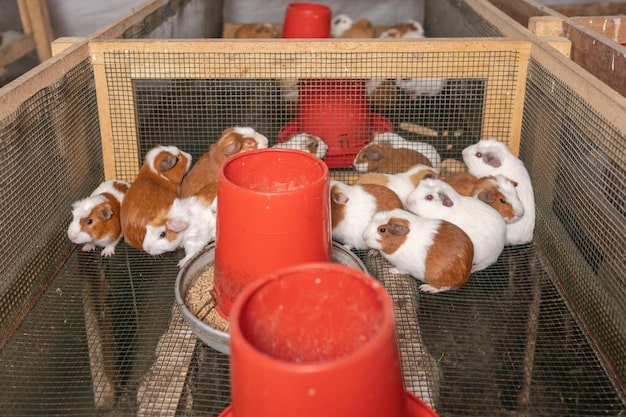
Step 3: Stocking Emergency Supplies
Having an adequate supply of essential resources is critical for ensuring the health and well-being of animals during and after a disaster.
This includes stocking food, water, medical supplies, sanitation items, and other necessities in a readily accessible location.
Food and Water
Store a minimum of three to seven days’ worth of food and water for all animals in your care. Use airtight containers to protect food from contamination and spoilage.
Medical Supplies
Assemble a veterinary first-aid kit that includes essential medications, bandages, antiseptics, and other medical supplies. Consult with your veterinarian to ensure the kit is appropriate for the specific needs of your animals.
Sanitation and Hygiene
Stock up on cleaning supplies, disinfectants, waste disposal bags, and personal hygiene items. Maintaining cleanliness is essential for preventing the spread of disease in a stressful environment.
- Creating a detailed inventory of all supplies and regularly checking expiration dates.
- Storing supplies in a waterproof and easily accessible location.
- Establishing a system for distributing supplies to staff and volunteers.
By maintaining a well-stocked emergency supply, you can provide essential care and support to animals when resources are scarce and help is limited.
Step 4: Training Staff and Volunteers
Emergency preparedness is a team effort. It’s essential to train staff and volunteers on their roles and responsibilities during a disaster.
This includes providing training on evacuation procedures, animal handling, first aid, and communication protocols.
Evacuation Procedures and Animal Handling
Conduct regular drills and simulations to familiarize staff and volunteers with evacuation routes, animal handling techniques, and safety protocols.
First Aid and Medical Care
Provide training on basic first aid for animals, including wound care, CPR, and recognizing signs of distress.
Communication Protocols
Establish clear communication channels and protocols for sharing information during a disaster. This includes designating a point person for communication and utilizing multiple channels, such as radios, cell phones, and social media.
- Creating a comprehensive training manual that outlines emergency procedures and protocols.
- Scheduling regular training sessions and refresher courses.
- Evaluating the effectiveness of training programs through drills and simulations.
A well-trained and prepared team is your greatest asset during a disaster. By investing in training and education, you can empower your staff and volunteers to protect animals and maintain order in a crisis.
Step 5: Community Collaboration and Partnerships
Emergency preparedness is not just an internal effort. Building strong relationships with community partners is essential for maximizing resources and support during a disaster.
This includes collaborating with other animal shelters, veterinary clinics, emergency management agencies, and local businesses.
Partnering with Other Animal Shelters and Veterinary Clinics
Establish mutual aid agreements with other animal shelters and veterinary clinics to provide temporary housing, medical care, and other resources during a disaster.
Collaborating with Emergency Management Agencies
Work with local emergency management agencies to integrate your rescue’s emergency plan into the broader community response effort.
Engaging with Local Businesses
Seek support from local businesses, such as pet supply stores, grocery stores, and transportation companies, to provide donations, supplies, and logistical assistance during a disaster.
- Participating in community emergency planning meetings and exercises.
- Sharing resources and expertise with other organizations.
- Building a network of contacts who can provide assistance during a disaster.
By fostering strong community collaborations and partnerships, you can expand your rescue’s capacity to respond to emergencies and enhance the overall resilience of your community.
Step 6: Post-Disaster Recovery
The recovery phase after a disaster can be just as challenging as the initial crisis. Developing a post-disaster recovery plan is essential for restoring your rescue’s operations and supporting the long-term well-being of the animals in your care.
This includes assessing damages, securing funding, providing ongoing care and support, and rebuilding infrastructure.
Assessing Damages and Securing Funding
Conduct a thorough assessment of the damages to your rescue’s facilities and equipment. Seek funding from insurance, government agencies, and charitable organizations to cover repair costs and operational expenses.
Providing Ongoing Care and Support
Continue to provide food, water, medical care, and emotional support to the animals in your care. Monitor their health closely and address any physical or psychological issues that may arise.
Rebuilding Infrastructure
Repair or rebuild damaged facilities as quickly as possible. Implement measures to mitigate future risks, such as elevating buildings, reinforcing structures, and improving drainage systems.
- Establishing a communication plan to keep staff, volunteers, and the community informed of your recovery progress.
- Seeking assistance from mental health professionals to address the emotional toll of the disaster.
- Documenting all expenses and activities for insurance and grant reporting purposes.
By developing a comprehensive post-disaster recovery plan, you can minimize the long-term impacts of a disaster and ensure the continued success of your animal rescue.
| Key Point | Brief Description |
|---|---|
| ⚠️ Risk Assessment | Identify potential hazards and vulnerabilities. |
| 🐾 Evacuation Plan | Establish routes and secure temporary housing. |
| 🎒 Emergency Supplies | Stock food, water, and medical necessities. |
| 🤝 Community Collaboration | Partner with shelters and agencies for support. |
Frequently Asked Questions
▼
The first step is to conduct a thorough risk assessment to identify potential hazards specific to your location, such as floods, wildfires, or hurricanes.
▼
It’s recommended to stock at least three to seven days’ worth of food and water for all animals in your care, stored in airtight, waterproof containers.
▼
Community collaboration helps maximize resources and support by partnering with other shelters, vet clinics, and local businesses during a disaster.
▼
A first-aid kit should include bandages, antiseptic solutions, essential medications, and any other supplies recommended by your veterinarian for your specific animals.
▼
Emergency drills should be conducted regularly, ideally at least twice a year, to ensure staff and volunteers are familiar with evacuation procedures and protocols.
Conclusion
By following these step-by-step guidelines, local animal rescues can enhance their **emergency preparedness** and protect the lives and well-being of the animals they serve. Remember, proactive planning and community collaboration are key to weathering any storm and ensuring the continued success of your mission.
